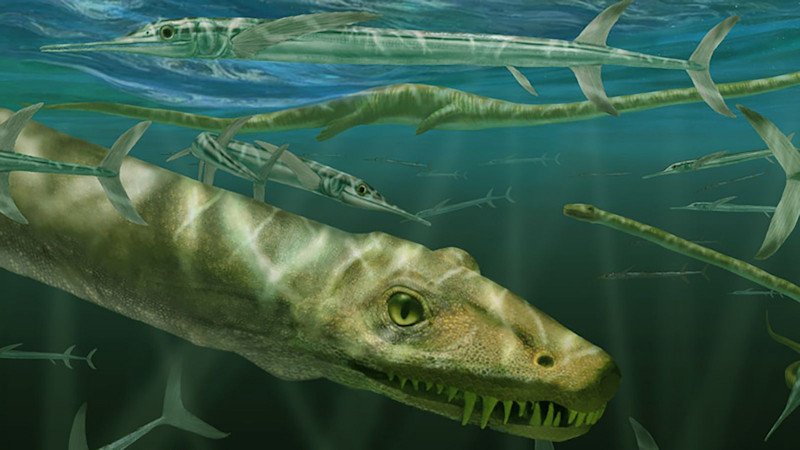Scientists unveil 240-million-year-old ‘dragon’ fossil

(CNN) — Newly-discovered fossils have allowed scientists to reveal a 240-million-year-old “dragon” in its entirety for the first ever time, National Museums Scotland (NMS) said in a statement on Friday.
The five-meter-long reptile from the Triassic period in China was first identified in 2003 but, after studying five newer specimens for ten years, scientists were able to depict the entire creature, which is named Dinocephalosaurus orientalis.
One fully articulated fossil, the last to come to light, offered a “beautiful complete specimen from the tip of the nose right down to the tip of the tail,” Dr Nick Fraser, keeper of National Sciences at NMS and one of the researchers, told CNN.
“It’s curled around in this sort of figure of eight and … it’s very reminiscent of a Chinese dragon.”
That fossil helped illuminate this mysterious creature and an international team of researchers from Scotland, Germany, the USA and China published their findings in the journal Earth and Environmental Science Transactions of the Royal Society of Edinburgh.
Professor Li Chun from the Institute of Vertebrate Palaeontology and Palaeoanthropology in Beijing was the first to uncover the fossils back in 2003. He was visiting a small village in Guizhou Province, southern China when he noticed a small vertebra in a slab of limestone, according to his colleague Fraser.
Local farmers then took Chun to a pig pen where there were other pieces of that type of rock, and he started to find bone fragments and pieced them together to discover this new species, Fraser added.
Now, newer fossils indicate that the creature had 32 vertebrae, creating an extremely long neck that likely helped it to catch fish, though scientists are still unsure of its precise function.
“I’m still baffled by the function of the long neck,” Fraser said. “The only thing that I can come up with is that they were feeding in the waters that had rocks, and perhaps crevices, in them. And they were using their long necks to probe and move into some of these crevices and maybe get prey that way.”
Fish are still preserved in the stomach region of one fossil, indicating that it was well-adapted to a marine environment, and its flippered limbs reinforce that hypothesis, researchers said in their paper.
They added that the Dinocephalosaurus’ long neck resembled another ancient, and equally baffling, marine reptile Tanystropheus hydroides.
“As paleontologists, we use modern-day analogs to understand life in the past. For Dinocephalosaurus and Tanystropheus, there is no modern-day analog,” Fraser said, adding that researchers can compare creatures such as ichthyosaurs to their modern day counterparts like tuna and dolphins.
“So we are still struggling quite a bit, as we do with a lot of animals in the Triassic, because it really is a weird and wonderful world of all sorts of bizarre animals doing things which animals today don’t seem to be doing.”
The-CNN-Wire
™ & © 2024 Cable News Network, Inc., a Warner Bros. Discovery Company. All rights reserved.


